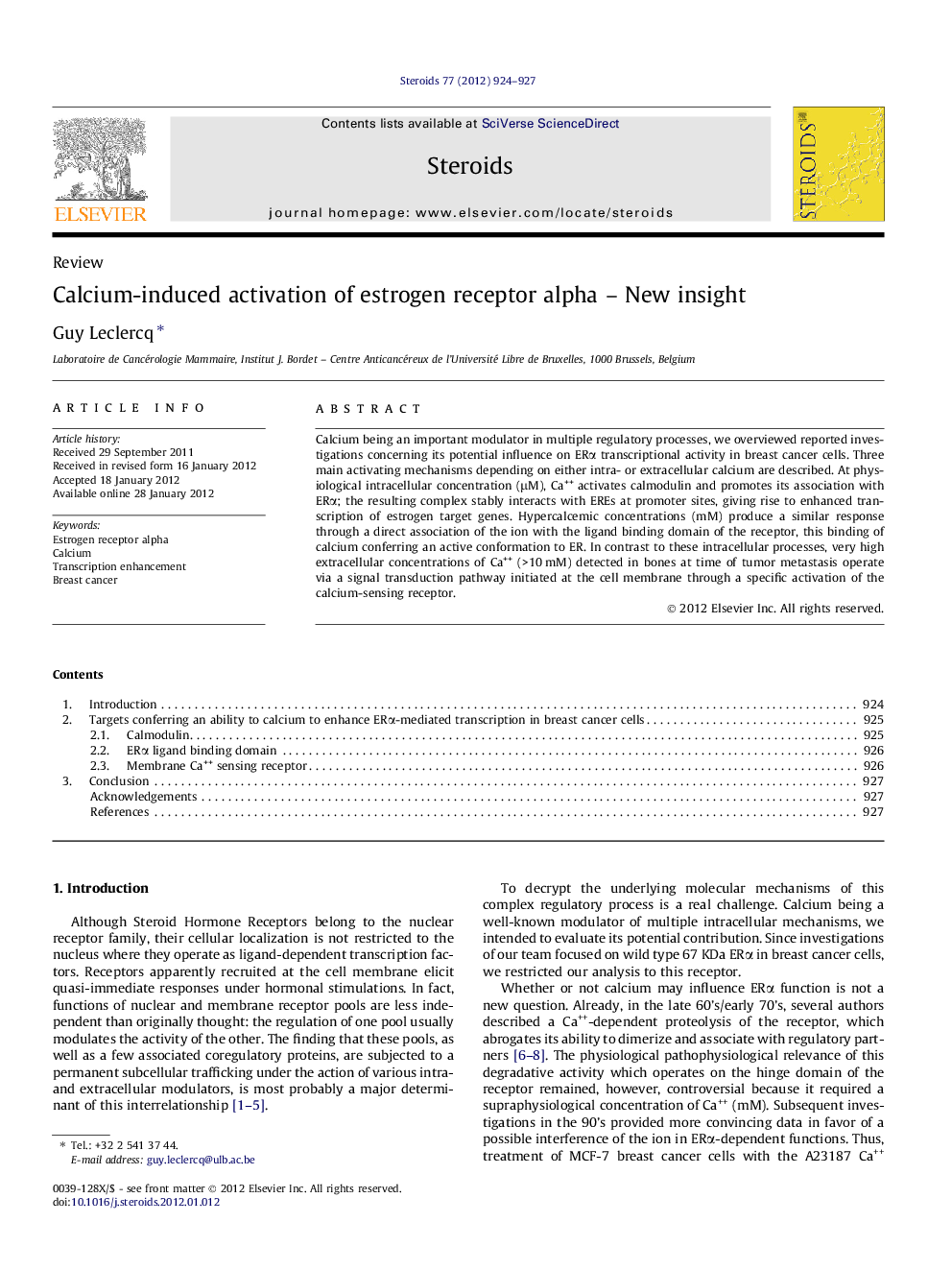| کد مقاله | کد نشریه | سال انتشار | مقاله انگلیسی | نسخه تمام متن |
|---|---|---|---|---|
| 2028328 | 1070411 | 2012 | 4 صفحه PDF | دانلود رایگان |

Calcium being an important modulator in multiple regulatory processes, we overviewed reported investigations concerning its potential influence on ERα transcriptional activity in breast cancer cells. Three main activating mechanisms depending on either intra- or extracellular calcium are described. At physiological intracellular concentration (μM), Ca++ activates calmodulin and promotes its association with ERα; the resulting complex stably interacts with EREs at promoter sites, giving rise to enhanced transcription of estrogen target genes. Hypercalcemic concentrations (mM) produce a similar response through a direct association of the ion with the ligand binding domain of the receptor, this binding of calcium conferring an active conformation to ER. In contrast to these intracellular processes, very high extracellular concentrations of Ca++ (>10 mM) detected in bones at time of tumor metastasis operate via a signal transduction pathway initiated at the cell membrane through a specific activation of the calcium-sensing receptor.
► Calcium enhances estrogen receptor-mediated transcription through three mechanisms.
► Physiological levels favor complexion of calmodulin with ER to initiate transcription.
► Hypercalcemic levels operate through a direct interaction with the ER’s LBD.
► Very high extracellular levels activate ER via a transduction pathway initiated at cell membrane.
Journal: Steroids - Volume 77, Issue 10, August 2012, Pages 924–927